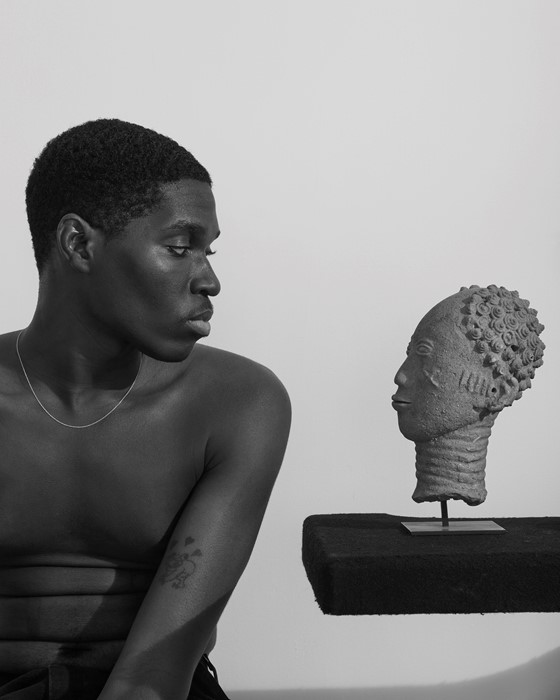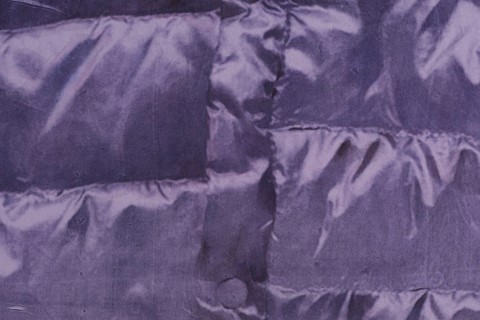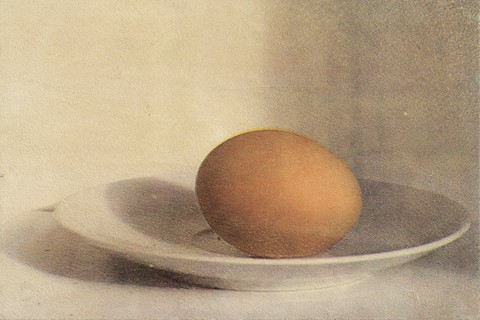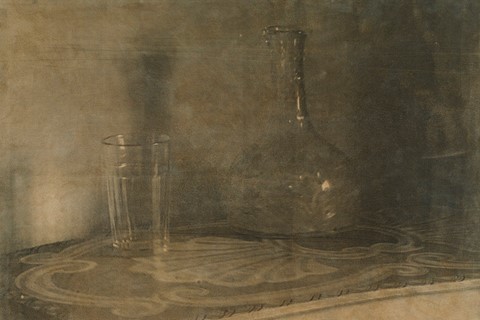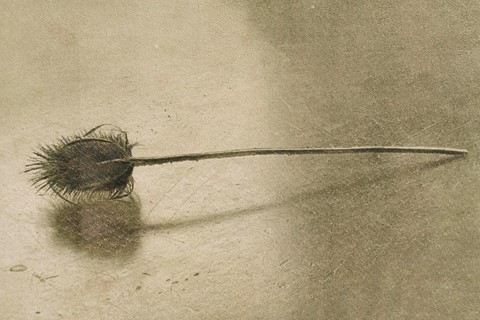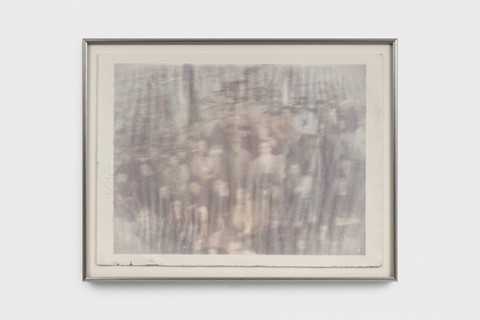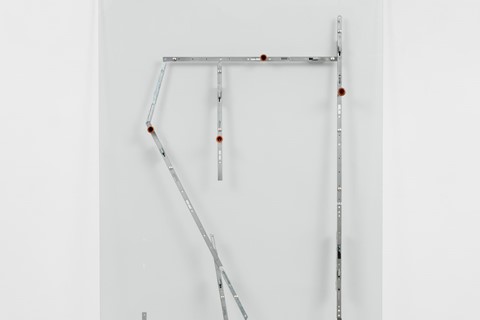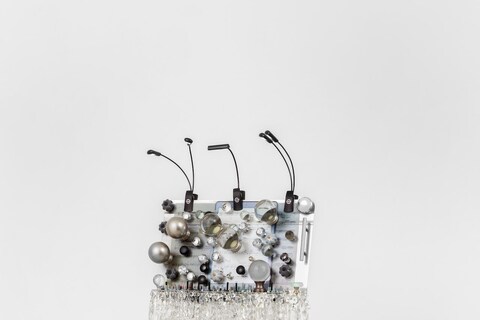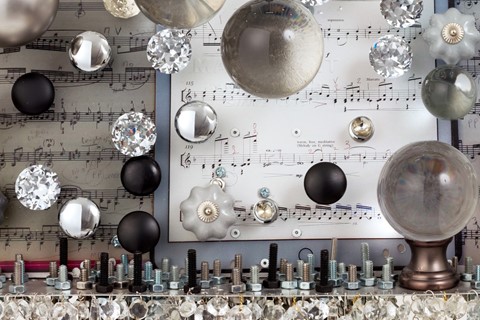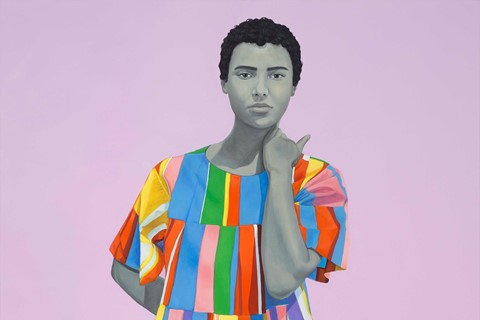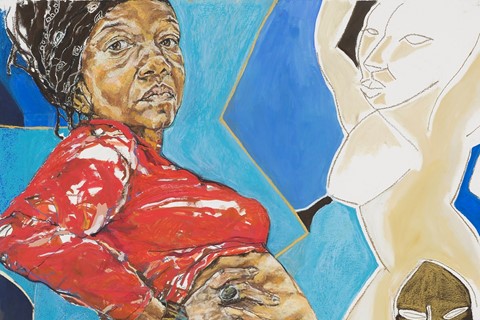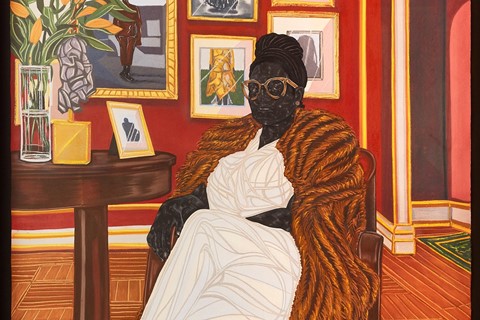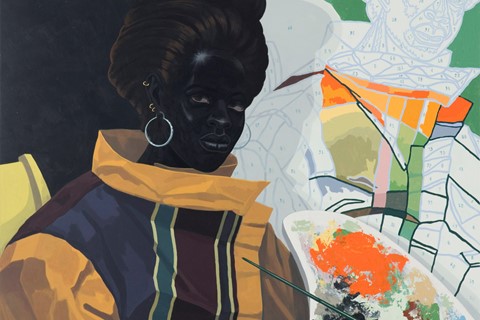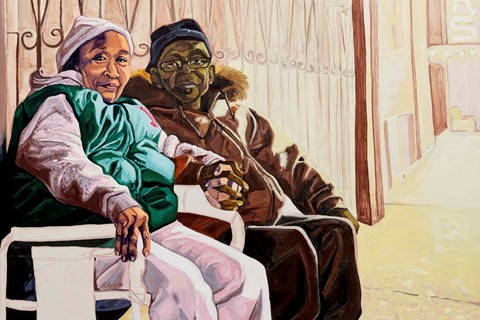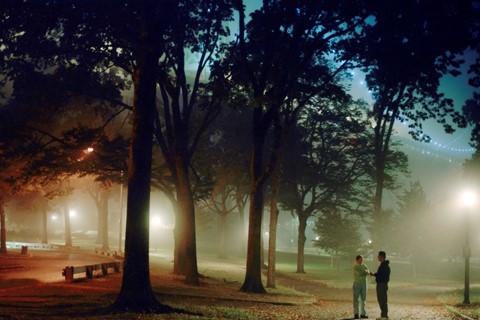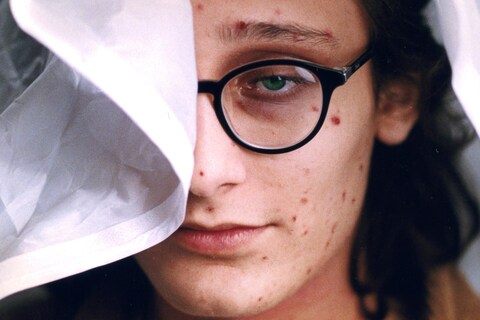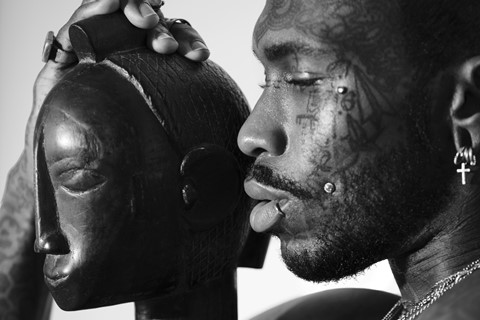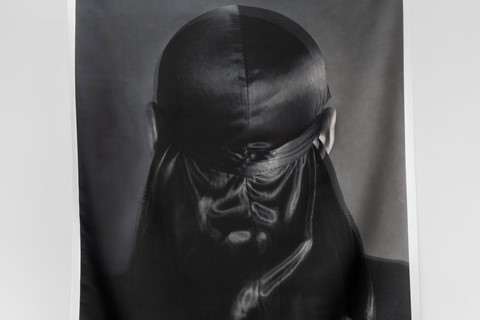From a new group show at Rose Easton to John Edmond’s intimate photographic exploration of Black masculinity at Maximillian William: here are ten of the best art shows to see in London in April and beyond
Solid Objects by Poppy Jones at Herald St: Until April 13, 2024
Poppy Jones’ delicate and playful works transform inanimate objects into vessels for contemplation, using a unique process which involves photography, lithography and watercolour. Housed in sleek aluminium frames, the works are elegantly arranged across both Herald St’s Bloomsbury and Bethnal Green sites. Whether it’s an arrangement of flowers, a puffer jacket or a humble egg, each subject is given pride of place. Immaculate in their presentation, on closer inspection, the mark of the maker is visible, with fingerprints on suede and creases within the fabric revealing the process of their creation. The piece Gold Shirt takes this one step further, with the image printed on the silk of the blouse itself an act of artistic cannibalism, further emphasising the fleeting quality of the moments Jones so masterfully captures.
Frenzy of the Visible by Sibylle Ruppert at Project Native Informant: Until April 20, 2024
A posthumous solo exhibition of German-Swiss artist Sibylle Ruppert demonstrates her sublime draughtsmanship and wickedly sensuous surrealism. Project Native Informant is dominated by the apocalyptic, four-panel drawing La Bible du Mal, a hellish altarpiece where bodies writhe and are pierced by strange objects, while figures seem to exist in moments between living and death. Inspired by the angst of German expressionists and the work of writers like the Marquis de Sade, Ruppert’s work is imbued with haunting emotional energy. To encounter the show is like walking into a nightmare; scenes are grotesque yet so seductively realised that it feels hard to look away.
Also on view at Project Native Informant’s second space nearby is Queer New Cinema, 1994-2023, which features timetabled screenings of films by Shu Lea Cheang and is worth carefully timing your visit to catch some of her genre-bending aesthetics.
Minimal in its installation, Rose Easton’s new group exhibition Vampire-Junkie has a preoccupation with sound and absence. The show brings together the work of four emerging artists: Hampus Hoh’s large transparent sculpture, featuring discards of musical instruments, Scott Keightley’s Y2K tech glam music standing adorned with glass orbs, Callum Jones’ haunting image of a crowd transformed via mechanical means, and Samuel Guerrero’s painting of a stadium void. The feeling that reverberates between the works is a sense of the uncanny, and the shadow of events which are yet to take place. The exhibition is accompanied by a programme of live events and activations; there will be an evening of listening with Callum Jones on April 11 at 7pm.
Capital by Coumba Samba at Cell Project Space: Until June 2, 2024
Coumba Samba’s enigmatic work explores the lived impact of institutions on human lives. For her first institutional show in the UK, Capital, the act and infrastructure of recycling is the means through which she interrogates the circulation of goods and ideologies between the West and West Africa. The exhibition features a room-sized mud enclosure, photographic prints and a sound composition by Gretchen Lawrence (Samba’s long-time collaborator as part of the electronic music duo ‘New York’). The remixing of field recordings from Senegal alongside royalty-free loops creates an atmospheric backdrop which echoes throughout the space.
A performance titled FIFA accompanied the opening of the exhibition, created in collaboration with Dakar-based dance school École des Sables. Informed by repetitive body motions found in football alongside the influences of Senegalese lamb wrestling and the South American game Queimada, dancers moved rhythmically in and out of sync with the discordant soundscape, leaving a physical record of their presence within the mud enclosure in the centre of the gallery.
Visitors are greeted by a large nine-foot bronze sculpture of a woman wearing athleisure in The Time is Always Now: Artists Reframe the Black Figure, a mammoth group exhibition curated by Ekow Eshun at the National Portrait Gallery. The figure feels familiar yet unplaceable, typical of the work of Thomas J Price, whose work will be recognisable from Warm Shores, his Windrush memorial which sits outside Hackney Town Hall. His practice celebrates the contemporary, monumentalising the everyday by imbuing it with the gravitas of a medium – sculpture –associated with grand histories. The exhibition is expansive, presenting an array of trailblazing Black artists who explore themes ranging from the historic absence of Black figures within art history, to a focus on the warmth of everyday life. On display are works by notable Black artists like Lorna Simpson and Kerry James Marshall alongside key British talents including Lubaina Himid and Claudette Johnson, all illuminating the Black experience through their respective practices.
The Human Model by Stuart Middleton at Carlos Ishikawa: Until April 20, 2024
Engulfed by the sounds of screeching, purring and accelerating, Stuart Middleton’s installation at Carlos Ishikawa feels like stepping into another world – but is it heaven or hell? Constructed from 36 duvets, the womb-like maze is ethereal and disorientating, the multi-directional sound design adding to this full-bodied experience. In the next room are two ‘kebab’ sculptures constructed from the detritus of everyday life: books, protein shakers, an apple TV remote; Middleton masters a playfulness that brings back the joy of mundane objects, interrogating the value we ascribe to these everyday things.
My Sorry Ass by Devlin Claro at Qrystal Partners: April 11 – May 25, 2024
Claro’s photographs play with our assumption about photography’s monopoly on truth; it’s never quite clear whether the moments captured are real or fictional. Taking inspiration from his surroundings – the outer Boroughs of New York – a feeling of trying to locate oneself within time and place resonates through his images. The results are dreamy, saturated pictures which elicit warmth even in their most abstract moments. His photographs are cinematic, framed in a way that illustrations his fascination with the everyday – Claro shows us that there is beauty within the mundanity of contemporary American life.
Wishing Well by Gal Schindler at Ginny on Frederick: April 13 – May 24, 2024
Gal Schindler’s dreamy paintings exist within undefined space, her sgraffito-esque technique allowing her figures to occupy a state of limbo, refusing to be fixed within wet paint. Bodies are rendered in constant flux, with her paintings exploring the endless possibilities for presenting the female form. Eluding simple categorisation, Schindler’s figures are neither defiant nor longing; they seduce the viewer, drawing them into the frame where they cannot be reached.
One by John Edmonds at Maximillian William: Until May 4, 2024
John Edmond’s intimate black-and-white photographs focus on the male form, engaging with our perceptions of Blackness through an exploration of Black as both form and content. In Caress, 2022, a tattooed, heavily pierced male carefully holds a wooden carved female sculpture, creating a dialogue between the two, the sharpness of the image elevated by the contrast of the subjects. There is a tenderness in his presentation of the masculine form, with bodies raw and real, embracing a multiplicity of identities. Working repeatedly with his muses, Edmonds’ practice recontextualises diasporic identity through his use of African sculpture, investigating meaning, heritage and displacement in the process.
Eckdaten by Miriam Stoney at Brunette Coleman: April 13 – May 17, 2024
Notorious for imaginatively reconstructing their gallery space, Brunette Coleman continues its shapeshifting with a solo show by Miriam Stoney. The exhibition takes its name from the amalgamation of two german words Ecke (corner) and Daten (data/dates), roughly translating to “the bare minimum needed to get an idea of what something is” – or in this case, to get lost. Stoney’s intervention responds to the architecture of the gallery by forming a labyrinth within the space. With an interest in harmony and scale in relation to the Enlightenment, she has created corner pieces which correspond to the length between her elbow and the tip of her middle finger, in the process becoming the architect of her own self-imposed trap.
